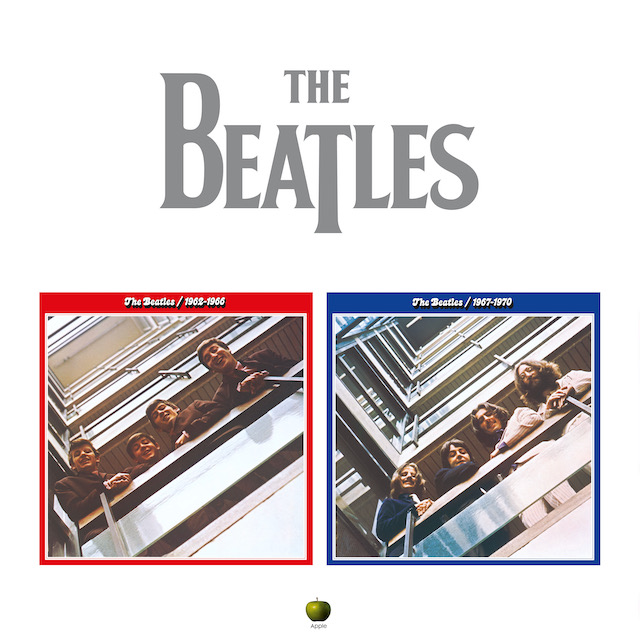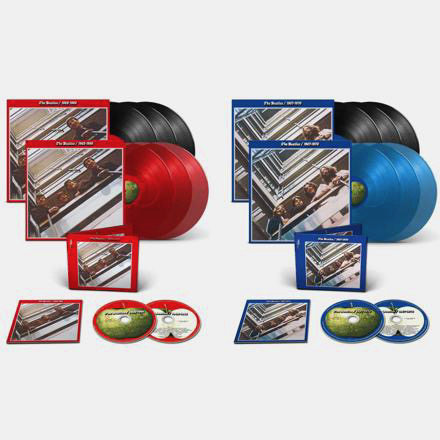
"Now And Then" is the last Beatles song written and sung by John Lennon, developed and worked on by Paul McCartney, George Harrison and Ringo Starr, and now finally finished by Paul and Ringo over four decades later.
In the clip below, producer / songwriter / educator Rick Beato - who has a popular YouTube channel, Everything Music - breaks down the elements of and reacts to the song.
"Now And Then" is released via Apple Corps Ltd./Capitol/UMe/Universal Music. The double A-side single pairs the last Beatles song with the first: the bands 1962 debut UK single, "Love Me Do", a truly fitting full-circle counterpart to "Now And Then". Both songs are mixed in stereo and Dolby Atmos, and the release features original cover art by renowned artist Ed Ruscha.
Order/save "Now And Then"/ "Love Me Do" double A-side single here.
The 12-minute "Now And Then" - The Last Beatles Song documentary film is available for streaming below.
"Now and Then's eventful journey to fruition took place over five decades and is the product of conversations and collaborations between the four Beatles that go on to this day. The long mythologised John Lennon demo was first worked on in February 1995 by Paul, George and Ringo as part of The Beatles Anthology project but it remained unfinished, partly because of the impossible technological challenges involved in working with the vocal John had recorded on tape in the 1970s. For years it looked like the song could never be completed. But in 2022 there was a stroke of serendipity. A software system developed by Peter Jackson and his team, used throughout the production of the documentary series Get Back, finally opened the way for the uncoupling of John’s vocal from his piano part.
The short-film, now available to watch worldwide, tells the story of the original recording being brought back to life with contributions from all four Beatles – marking the completion of the last recording that John, Paul, George and Ringo will get to make together.
On November 10, The Beatles 1962-1966 (The Red Album) and 1967-1970 (The Blue Album) collections will be released in 2023 Edition packages by Apple Corps Ltd./Capitol/UMe/Universal Music Canada. Since their first incarnations appeared 50 years ago, these albums have introduced successive generations to The Beatles music.

Now, both collections tracklists have been expanded, with all the songs mixed in true stereo and Dolby Atmos. New 4CD and 180-gram 6LP vinyl collections pair Red and Blue in slipcased sets. The UK single version of "Love Me Do" now kicks off 1962-1966 (2023 Edition), and "Now And Then" is featured on 1967-1970 (2023 Edition) to complete the career-spanning collections.
Pre-order/pre-save 1962-1966 and 1967-1970 (2023 Editions) and view the complete tracklistings here

This last instalment of The Beatles recorded history is followed by new editions of the two compilation albums always seen as the definitive introduction to their work. Since their 1973 debuts, 1962-1966 (The Red Album) and 1967-1970 (The Blue Album) collections have ushered countless listeners of all ages, from all parts of the world, into lifelong Beatles fandom. Expanded for their new 2023 Edition releases (out November 10), the collections together span The Beatles entire recorded canon with 75 standout tracks, from their first single, "Love Me Do", to their last, "Now And Then". The collections 21 newly-added tracks (twelve on Red , and nine on Blue) showcase even more of The Beatles very best songs.
In recent years, several 1967-1970 tracks and a few from 1962-1966 have received new stereo and Dolby Atmos mixes for The Beatles Special Edition album releases, including Sgt. Peppers Lonely Hearts Club Band (2017), The Beatles (White Album) (2018), Abbey Road (2019), Let It Be (2021), and Revolver (2022), as well as new stereo mixes for The Beatles 1 (2015). All tracks not also featured on those releases have been newly mixed in stereo and/or Dolby Atmos by Giles Martin and Sam Okell at Abbey Road Studios, aided by WingNut Films audio de-mixing technology. Both collections include new essays written by journalist and author John Harris.